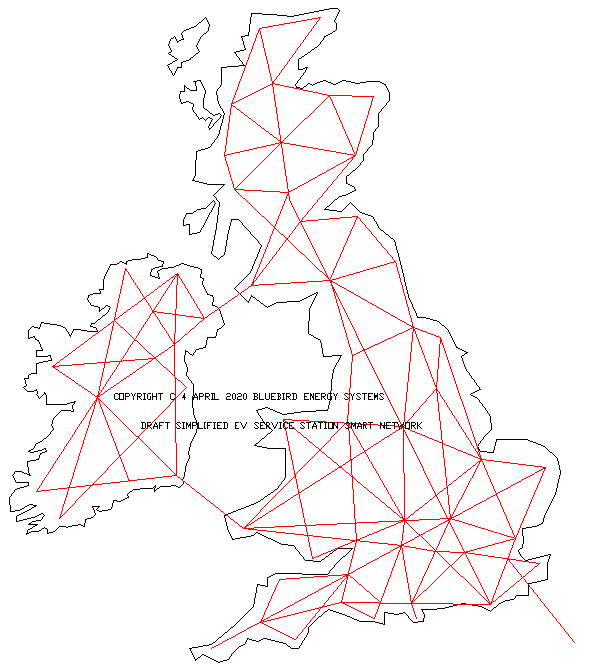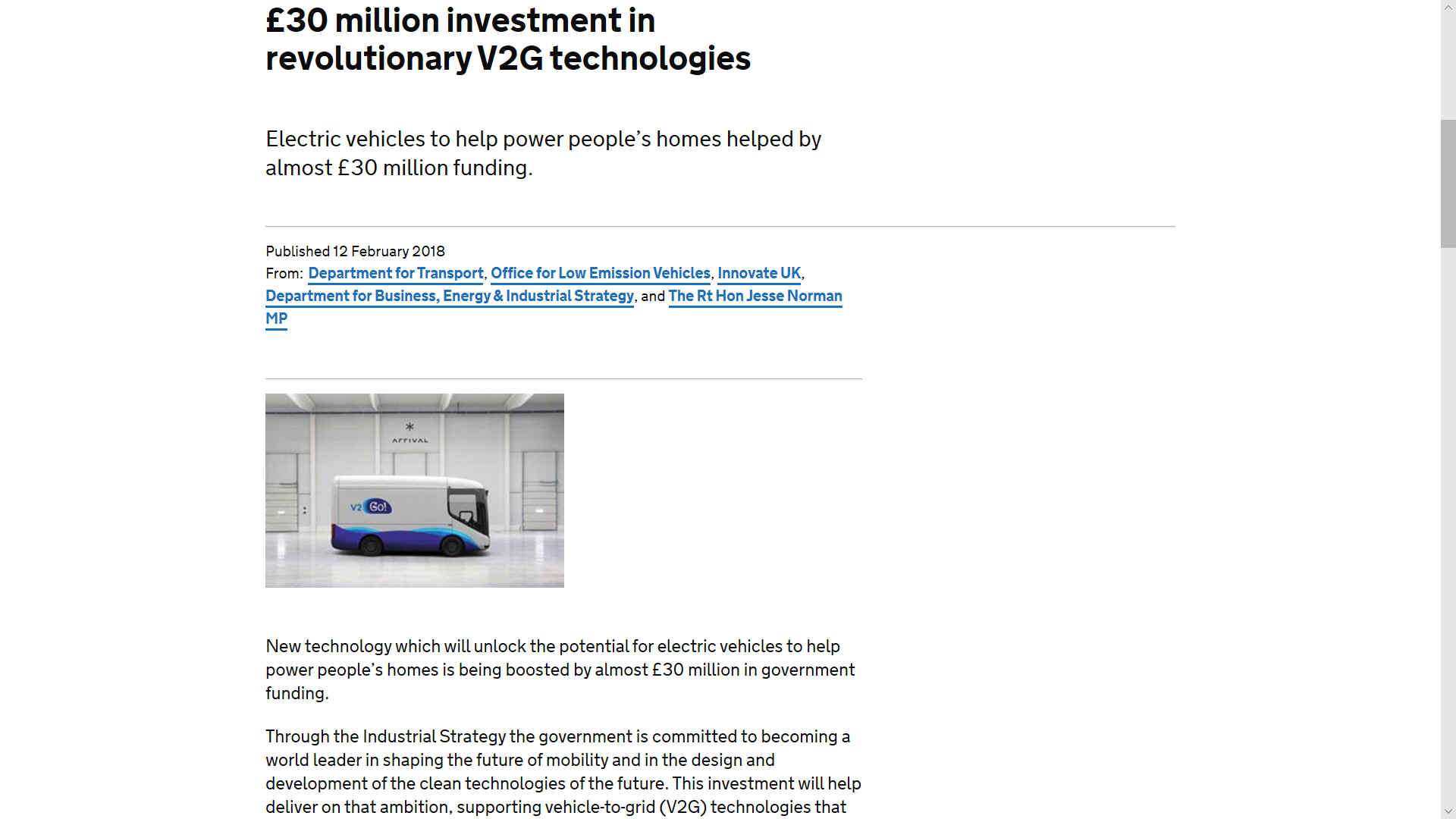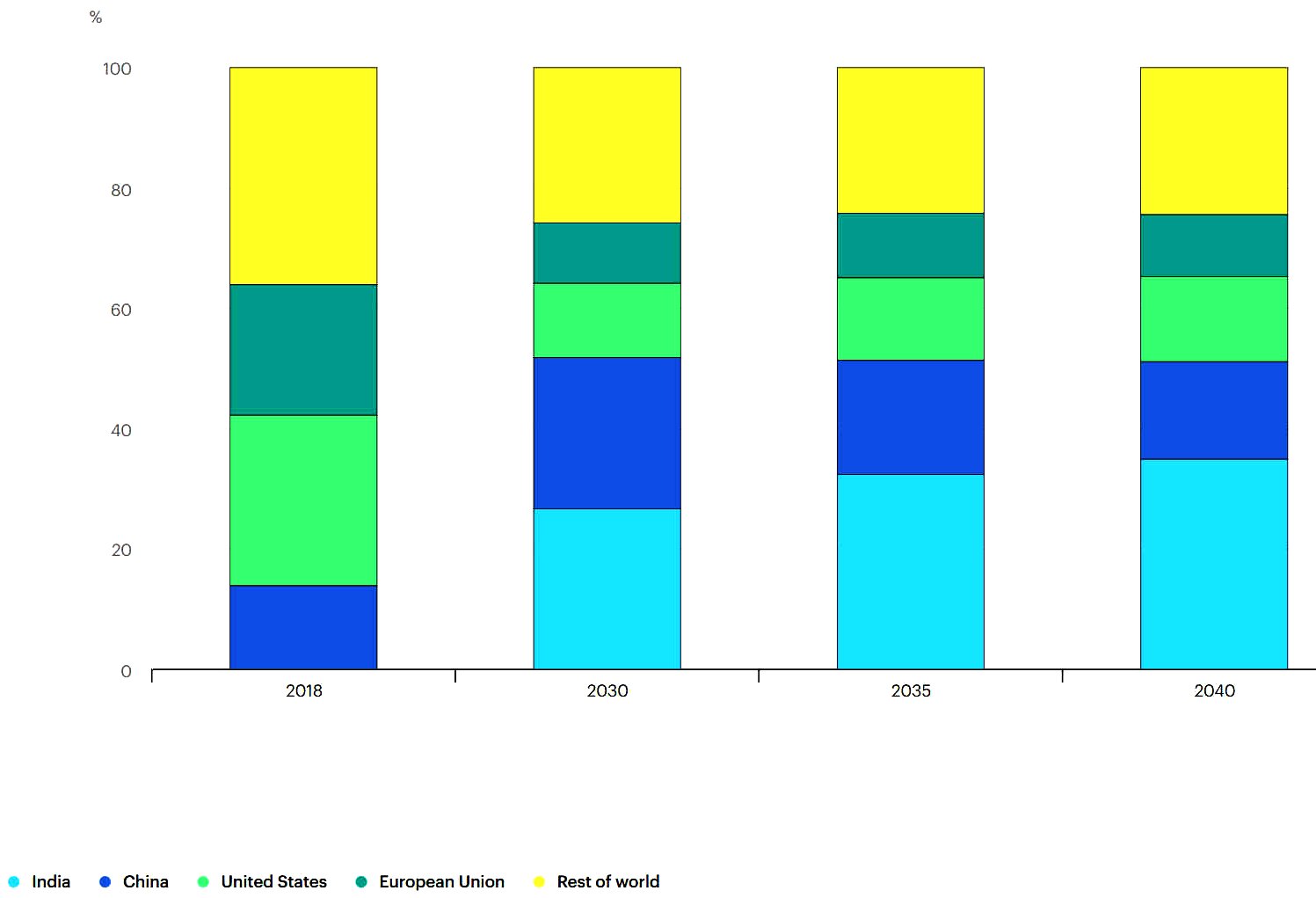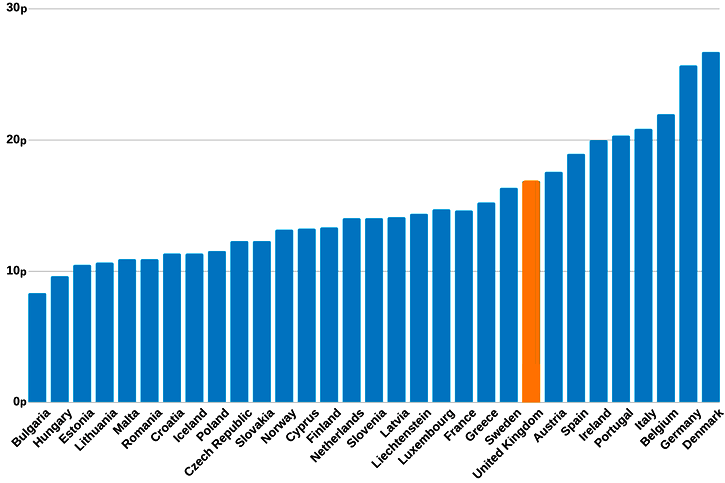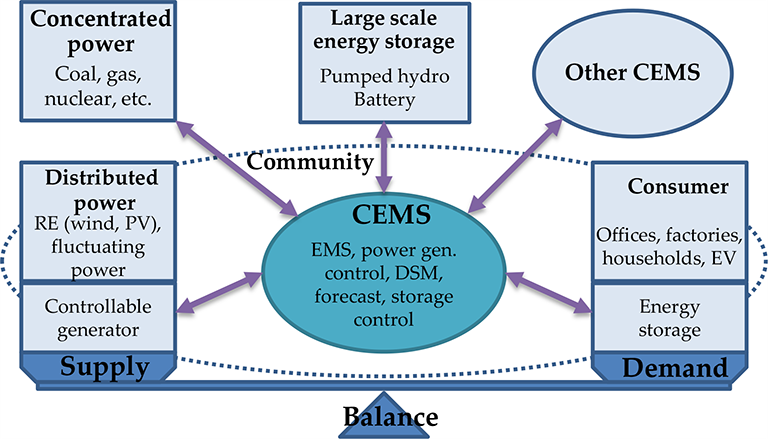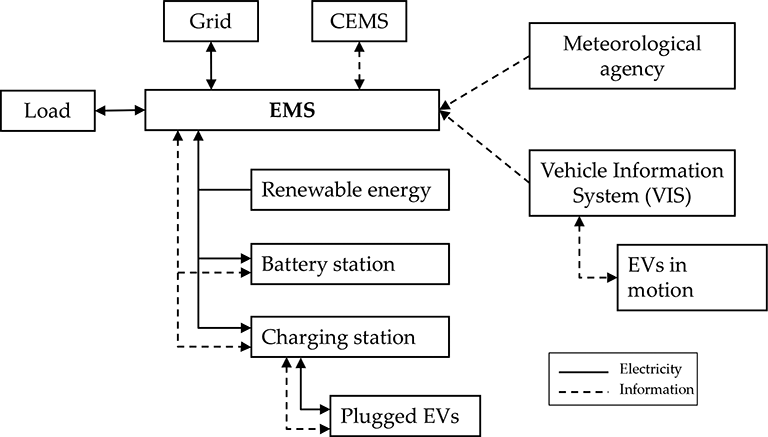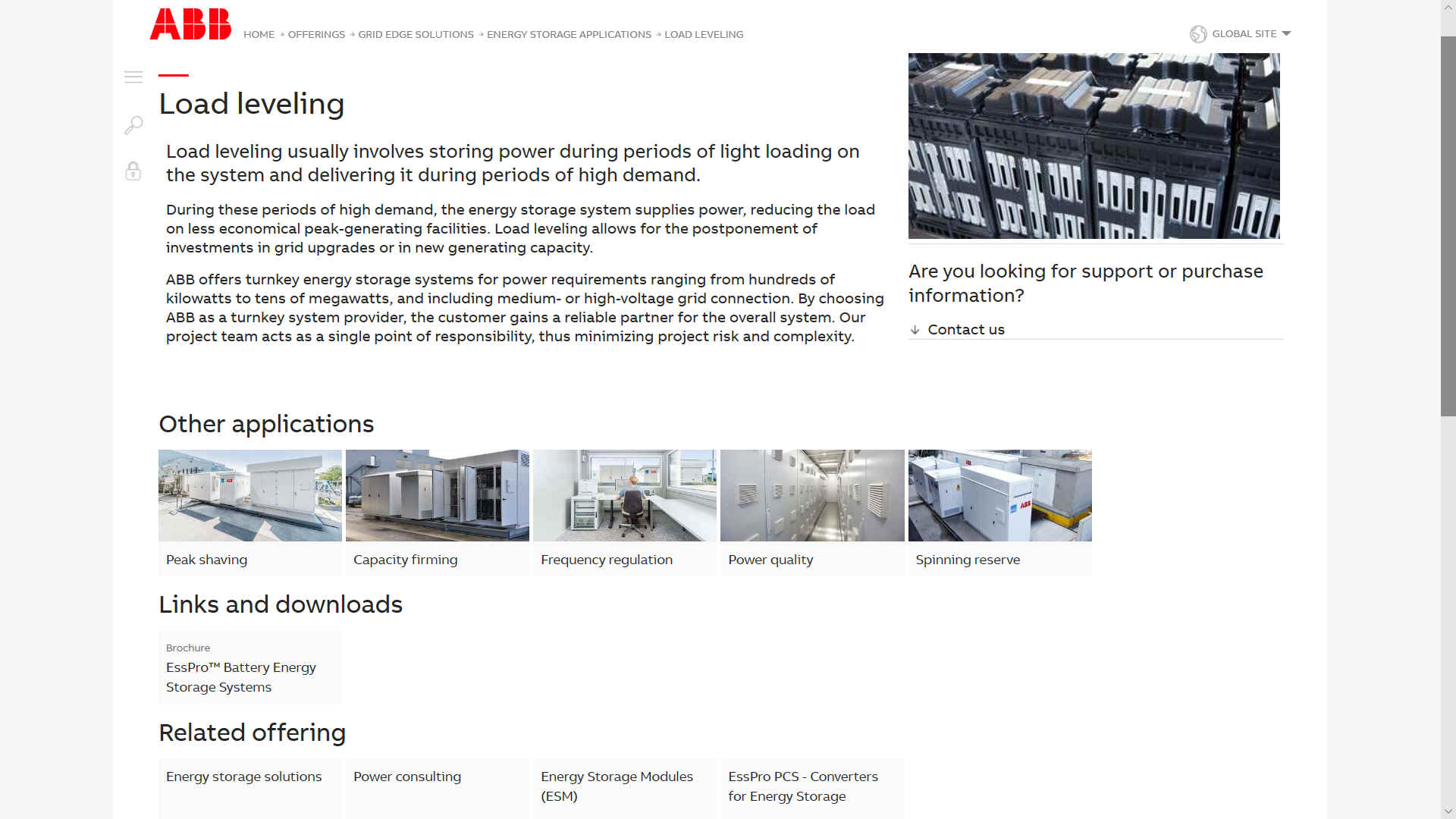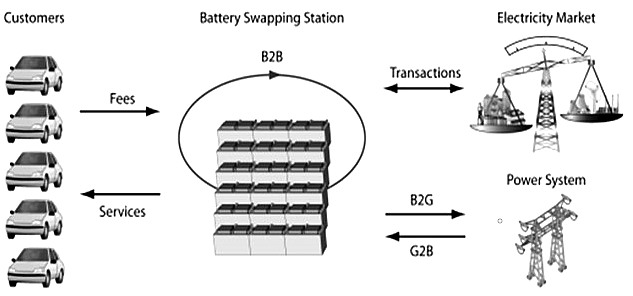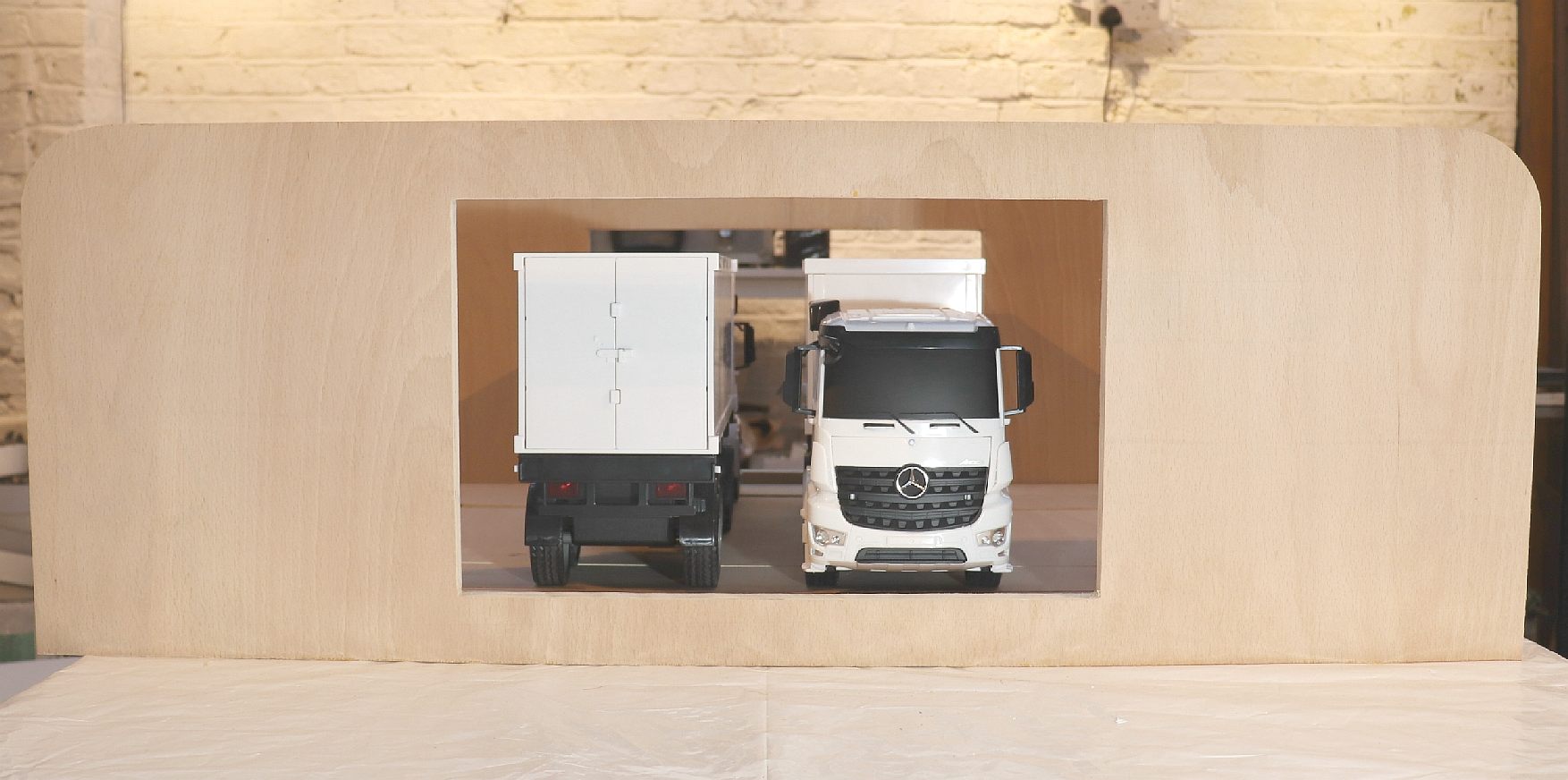|
LOAD LEVELING
Please use our A-Z INDEX to navigate this site or see HOME
BATTERIES - COST - STANDARDIZATION - HOME - HYDROGEN - LOAD LEVELLING - PAYD - RANGE ANXIETY - RECOVERY - SERVICE STATIONS
|
||||||||||||||||||||||||||||||||||||||||||||||||||||||||||||||
|
DUAL PURPOSE STATIONS - This outline diagram (end elevation) show how a Universal EV service station might look. The existence of such facilities may have the effect of boosting sales of EVs that are compatible. We would encourage every car maker to consider voluntarily including at least one vehicle in their range in any future development programme that is compatible. Every country needs cars, vans and trucks for a sustainable future. A medium size truck is shown in these drawings.
The proposed EV forecourt offers between 7.68 - 15.36MWh of energy storage with a capacity of between 48-96 battery cartridges on a continuous charge cycle. Five of these stations (76.8MW) could recharge (refuel) up to 10 trucks or cars a minute during peak demand.
In a competitive electricity market, electricity prices are not determined only by the generator cost functions. Market participants’ strategic decisions also affect prices. Connected SMARTNET stations can be likened to a largely bundled battery which is able to consume (absorb) the electricity from the grid, store it, and release back to the grid using an Energy Management System (EMS).
The move to renewable energy means more load leveling will be needed than ever before in terms of the efficient distribution of generated electricity. That is where the proposed SMARTNET EV service stations really come into their own for countries looking to make the best of their solar and wind generated electricity.
Why is that?
The electricity demand of both residential and commercial customers is a constantly changing characteristic of large scale power systems. This is a challenge that utility companies all over the world are faced with every day.
According to the IEA, batteries have emerged as a key technology for the transformation of electricity systems and the reduction of carbon emissions around the world. It follows that battery energy stores like SMARTNET, whether intended for electric vehicles or as power for local communities, can be used to recharge batteries for EV's, but can also be used to store electricity with solar and wind generation increased flexibility - over power station load-leveling - feeding power back into the grid in emergency situations.
EV’s potential impact on the grid
With various studies having found that EV owners currently tend to charge their cars at the end of their working day – coinciding with when energy demand is already at its peak – the major question being posed is this: how will the system be able to cope if charging habits remain the same when EVs are in much wider use?
To put the potential demand increase into some perspective, it is estimated the draw on the grid for each single EV is equivalent to that of an entire house. Thus, hypothetically speaking, if a network feeder line had 2,000 homes on it, and 400 of those households decided to charge their EVs at the same time in the early evening, then peak demand would rise by a massive 20 percent.
It is highly likely in this case that demand would far outstrip supply, resulting in such system chaos as transformer overloads, feeder congestion, and undue circuit faults. The consequences of this would be widespread power outages, bringing catastrophic disruption to everyday life.
An electric vehicle has the same electricity demand as a house. As the numbers of EVs grow, this will result in challenges for electricity networks, especially the low voltage (LV) networks which run between substations and people’s homes. The key issue will occur primarily when large numbers of people return home from work in the evening, especially in winter, and plug in their EVs to charge at peak times. To avoid costly electricity network upgrades, this issue can be alleviated if the charging times of EVs are
staggered - as with the proposed dual purpose service stations featured in
these articles.
The proposed network of EV service stations neatly accomplishes what would normally be a homecoming evening peak, to late evening or early morning. This shift could itself be managed - to make use of energy that would otherwise need to be exported.
The UK government is looking at mandating smart charging.
UK MAP - Draft infrastructure networked grid for the UK to kick-start EV service station building, aiming for a low carbon society that is sustainable and climate friendly by 2050 to comply with the targets set by the Climate Change Act 2008. This map is simplified and includes the Republic of Ireland for practical reasons. Supplied by and used with permission of Bluebird Energy Systems. If we use just the intersections endpoints as likely locations that would mean installing 60+ stations, that could recharge more than the 14,000 charge points in the UK as of January of 2018. Another 1,800 such stations at strategic locations could service all 25,000,000 million vehicles in the United Kingdom. Optimistic, but you have to start somewhere when conceptualizing. In the UK, the Department for Business, Energy and Industrial Strategy have introduced their Grand Challenges initiative, offering grants of up to 70% for SMEs in connection with mobility and clean energy.
Why build twice?
We need load leveling and we need EV service stations. It makes sense to combine the two. The foundation of an international standard requires agreement as to the storage medium.
Renewable energy sources are providing increasing amounts of the power supply in countries around the world – a crucial element in decarbonising the electricity sector, which accounts for almost 40% of global
CO2 emissions. As the share of variable renewables such as wind and solar PV grows, electricity systems need to become increasingly flexible in order to respond effectively to changes in supply and demand.
Batteries have other advantages, too. They increase the value and competitiveness of solar PV by storing the electricity produced during sunny periods and feeding it back to the grid at another time.
Battery
storage, coupled with solar PV, also appears to be one of the most cost-effective ways of helping provide affordable
electricity to isolated
communities as per SDG
7.
Battery costs have fallen by over 80% since 2010 thanks to technology improvements across a range of applications. In 2018, around 70 gigawatt-hours (GWh) of battery cells were used for electric cars worldwide, while 8 GWh of stationary batteries were added to provide flexibility in the power sector.
Load leveling usually involves storing power during periods of light loading on the system and delivering it during periods of high demand.
VEHICLE TO GRID PROPOSALS - V2G FEBRUARY 2018 UK PROJECT
£30 million investment in revolutionary V2G technologies
Electric vehicles to help power people’s homes helped by almost £30 million funding. New technology which will unlock the potential for electric vehicles to help power people’s homes is being boosted by almost £30 million in government funding.
Through the Industrial Strategy the government is committed to becoming a world leader in shaping the future of mobility and in the design and development of the clean technologies of the future. This investment will help deliver on that ambition, supporting vehicle-to-grid (V2G) technologies that could enable electric cars and other vehicles to deliver electricity back to the smart grid, to light homes and power businesses.
The funding has been awarded to 21 V2G projects, to pay for research and design and development, with the aim of exploring and trialling both the technology itself and commercial opportunities.
These schemes, including EDF Energy’s V2GO scheme, will demonstrate how energy stored in electric vehicle batteries could be borrowed by the electricity system during peak hours, before being recharged during the off-peak in time for their drivers to set off on their next journey.
V2G Case study
Using electric vehicles in dense urban areas like Oxford will significantly reduce local emissions and improve air quality, boosting the quality of life for residents and benefitting businesses. Led by EDF Energy R&D UK, the ‘V2GO’ is a large scale demonstration of V2G charging in Oxford using 100 electric fleet vehicles (cars and vans) from a number of organisations including several delivery and taxi companies.
The project will develop, trial and evaluate potential business models for fleet operators’ use of electric vehicles and their suitability for vehicle to grid (V2G) charging.
The consortium is made up of 8 organisations with expertise in energy and power markets and systems, fleet operation value chains and electric mobility: EDF Energy R&D UK, University of Oxford, Oxfordshire County Council, Arrival, EO Charging, Upside Energy, and Fleet Innovation.
At the same time these electric vehicles will provide a cleaner alternative to many of the fleet vehicles operated in UK cities, including Royal Mail vans, and Addison Lee taxis.
Transport Minister, Jesse Norman said:
"As the number of electric vehicles grows and their battery capabilities increase, there is a huge opportunity for them to make a significant contribution to a smart grid. These projects are at the cutting edge of their field. Just like the visionary designs of Brunel and Stephenson in transport, they could revolutionise the ways in which we store and manage electricity, both now and in the future."
"The UK’s automotive industry is a great British success story, and as set out in our ambitious Industrial Strategy we are determined to lead the way in innovative, low-emission vehicle production. We have shown that growing the economy while cutting emissions, can, and should, go hand in hand. Vehicle-to-grid technology provides another opportunity for the UK to showcase to the world our leading expertise in game-changing automotive and low carbon technologies."
Dan Bentham, Head of R&D, Smart Customers, EDF Energy said:
"Electric vehicles will play an important role in the future of UK energy and its economy. They will have a beneficial impact on the environment by reducing emissions and improving air quality. Through our research, EDF Energy will use new technologies, business models and smart systems to make low carbon transport, and the infrastructure and market conditions needed for its success, a reality."
The investment will help deliver on the government’s ambition, set out in the recently published Automotive Sector Deal , to be at the forefront of low-emission and electric vehicle production, powering the next generation of innovative, environmentally-friendly vehicles.
The competition for government funding, run by Innovate UK, saw a host of winners including SSE Services, Nissan, OVO Energy, Octopus Energy, Cisco, Flexisolar and AT Kearney.
Innovate UK recently concluded the assessment process, with OLEV and BEIS providing almost £30 million to grant fund industry led collaborative R&D in electric ‘vehicle to grid’ technology for up to 70% of project costs. For media queries, call: +44 (0) 20 7944 4292
Who
needs load leveling the most?
PREDICTED INCREASE IN BATTERY STORAGE - In 2018 India had little in terms of battery storage capacity. The United States led with the EU 2nd and China next. The prediction is that India will overtake the rest of the world in percentage terms.
There is a strong link between human progress and energy consumption; the UN Human Development Index suggests that increases in energy consumption of up to around 100 gigajoules (GJ) per head are associated with substantial increases in human development and well-being. Today, around 80% of the world’s population live in countries where average energy consumption is less than 100 GJ per head.
In order to reduce that number to one-third of the population by 2040, the world would require around 65% more energy than today, or 25% more energy than needed in the evolving transition scenario. The increase in energy required over and above the evolving transition scenario is roughly the equivalent of China’s entire energy consumption in 2017.
EU ELECTRICITY PRICES - The chart above shows the price variation between electricity across the European Union.
The power sector is currently the single largest source of
carbon emissions from energy use and it is therefore critical that the world continues to seek ways to reduce emissions from this sector. Reductions in carbon emissions from the transport industry in all scenarios to 2040 is relatively small in comparison.
CEMS - In Japan, community energy management system (CEMS) has been proposed and demonstrated. The main purpose of CEMS is realizing a resilient and smart community, especially related to efficiency in energy utilization and minimization of CO2 emission. The concept of CEMS comes from the demand to optimize the energy services, maximize the potential economy, and minimize the environmental impacts. CEMS coordinates and monitors all the energy supply and demand throughout the community, hence improving the comfort, security, and safety of the whole community members. In CEMS, the streams of energy and information are flowing simultaneously covering supply, demand, storage, and distribution. As a system, CEMS must be robust and secured because it deals with individual information and its authentication.
EMS - The conceptual diagram of integration of EVs and used EV batteries in supporting the electricity in a small-scale EMS is seen above. To take part in the ancillary services coordinated by EMS, there must be an initial contract between the EV owners EMS, either direct contract or aggregator-based contract through third entity such as an aggregator. Because of the mobility characteristic of EVs, their charging and discharging behaviors can be fully controlled by EMS in case EVs are connected to the designated charging stations.
In addition, the used EV batteries are employed as stationary storage which are always connected to and managed completely by EMS. These used EV batteries are utilized mainly for peak-shift. Therefore, they are charged when the electricity price is low, such as during night time, and discharged during peak-load time or when the electricity price is relatively high, such as noon time. Hence, the amount of electricity which is purchased from the grid during peak-load time can be reduced, resulting in total low electricity cost.
AUSTRALIAN FORECAST 2020
Australia’s economy is reliant on liquid fuel and will be for some time to come. Liquid fuel makes up 52 per cent of Australia’s final energy consumption and includes
petrol, diesel,
jet fuel and biofuels. Around 90 per cent of the fuel Australia
use is derived from oil that is sourced from overseas.
Australia is poised to take a world-leading role in low-emissions hydrogen production. Australia has been world-leading in new techniques for the production and liquefaction of hydrogen for transport.
Australia’s Chief Scientist is tasked with preparing a plan for a National Hydrogen Strategy to outline a way forward. Hydrogen would be able to provide important fuel for domestic needs, but there may also be opportunities to export hydrogen as other countries seek alternative forms of transport energy.
Both of these new technologies require substantial changes to refuelling infrastructure. Electric vehicle charging infrastructure is emerging around Australia, but this will need to expand if the market grows. Hydrogen has limited potential to use existing gas infrastructure. Concerning liquid hydrogen, there will need to be significant investment for refuelling sites.
ABB
- Asea Brown Boveri Limited provides power transmission equipment. The Company offers power inverter, transformer, generator, high voltage products. operation and long-term maintenance services. ABB operates worldwide.
A key part of Power Grids' offering turnkey systems and service for power transmission and distribution grids and for power plants; this includes electrical substations and substation automation systems flexible AC transmission systems (FACTS), high-voltage direct current (HVDC) systems, and network management systems. The division is subdivided into the four business units High Voltage Products, Transformers, Grid Automation and Grid Integration.
In December 2018, ABB and Hitachi Ltd. announced that Hitachi would take over ABB’s power grid business for about $6.4 billion. The transaction would be the Japanese conglomerate’s biggest-ever deal as it shifts focus from nuclear plants to the higher-growth market for electricity networks.
TRADITIONAL LOAD LEVELING
Grid over and under load management consists of dumping excess to another geographical region and taking excess from those areas generating more energy than they can use - the aim being to keep power stations operating at optimum levels - without having to close or slow them down.
CONTACTS
Bluebird Energy Systems (SME) PIC No: 895922168
Cleaner Ocean Foundation (Not for Profit) PIC: 915580382
TOP ELECTRICITY POWER COMPANIES A - Z
According to Power-Technology.com they listed power companies (as per 2018 Forbes calculation of net market capitalization, assets, sales and profit) as some of the biggest utilities:
Duke Energy Corporation, DUK, N. Carolina, USA Dominion Energy Inc., Richmond, Virginia Exelon Corporation EXC, Chicago, USA KEPCO Korean Electric Power Corporation National Electric Grid & Central Electricity Authority (India) National Energy Board (Canada) National Grid plc (formerly Central Electricity Generating Board UK) Next
Era Energy Inc. Florida, USA Southern Company, Atlanta, Alabama, Georgia, Mississippi, USA State Grid Corporation of China TEPCO Tokyo Electric Power Company
ENERGY GENERATING-DISTRIBUTION UTILITIES
JAPANESE CHAdeMO - In Japan, this ultrafast charging follows the standard of CHAdeMO (the acronym of “charge de move”, equivalent to “move by charge”) which offers charging capacity of 10–50 kW. Until the end of 2015, there are about 6000 ultrafast chargers following CHAdeMO standard across Japan. CHAdeMO chargers can facilitate bidirectional electricity flows resulting in possible charging and discharging of EVs. In addition, intelligent controlling system is also generally installed inside the charger, hence high level communication and control can be achieved.
A - Z of CARS and MOTORCYCLES
MODEL 1:20 - April 6 2020, a model of the service station is under construction, shown here with two Mercedes articulated container trucks inside. We are using plywood for the building and some of the working parts - that cannot be shown due to patent law prohibiting prior publication. The Automated & Electric Vehicle Act 2018, makes it law in England that provision must be made for charging and refuelling of electric vehicles at service stops. This system would more accurately be described as a refuelling point - since the energy exchanges for trucks and cars are virtually instant. The building can be a quarter this size for city locations where space is limited. But for load levelling purposes, the larger the capacity of stored electricity, the more efficient the grid. Copyright photograph © 6 April 2020, Cleaner Ocean Foundation.
BATTERY CARTRIDGE FORMAT - This slimline battery cartridge format provides 0.2 of a meter cubic capacity. For trucks they can be used in multiples to provide up to 1.6 of a cubic meter capacity. That is enough for even Elon Musk's road trains. The Universal format means the energy storage medium can be batteries or hydrogen. This is future proofing load leveling for a time when electric vehicle are the norm and coal and oil fired generating stations are a thing of the past.
LINKS & REFERENCE
https://www.cibsejournal.com/technical/out-of-juice-buildings-need-to-deal-with-demand-for-electricity-from-electric-cars/ https://www.sms-plc.com/insights/blogs-news/smart-charging-the-ev-solution-for-a-smarter-grid/ https://www.gov.uk/government/news/30-million-investment-in-revolutionary-v2g-technologies http://power.ece.drexel.edu/wp-content/uploads/2015/01/ECESD201314_ECE-23-Helker_FR.pdf https://www.mdpi.com/1996-1073/12/9/1608 https://www.bloomberg.com/profile/company/1415306D:GR https://en.wikipedia.org/wiki/ABB_Group https://new.abb.com/distributed-energy-microgrids/applications/energy-storage-applications/load-leveling ABZ
Aggregate-Bau GmbH & Co. KG
- Power supply with diesel engine-driven generating sets. https://ec.europa.eu/transparency/regexpert/index.cfm?do=groupDetail.groupDetail&groupID=2735 https://www.acer.europa.eu/en/Electricity/CLEAN_ENERGY_PACKAGE/Pages/Risk-Preparedness-Regulation.aspx https://www.entsoe.eu/ https://ec.europa.eu/easme/en/section/sme-instrument/eic-accelerator-sme-instrument-funding-opportunities
BATTERIES - COST - STANDARDIZATION - HOME - HYDROGEN - LOAD LEVELLING - PAYD - RANGE ANXIETY - RECOVERY - SERVICE STATIONS
Please use our A-Z INDEX to navigate this site
|
||||||||||||||||||||||||||||||||||||||||||||||||||||||||||||||
|
This website is provided on a free basis as a public information service. copyright © Climate Change Trust 2021. Solar Studios, BN271RF, United Kingdom.
|


